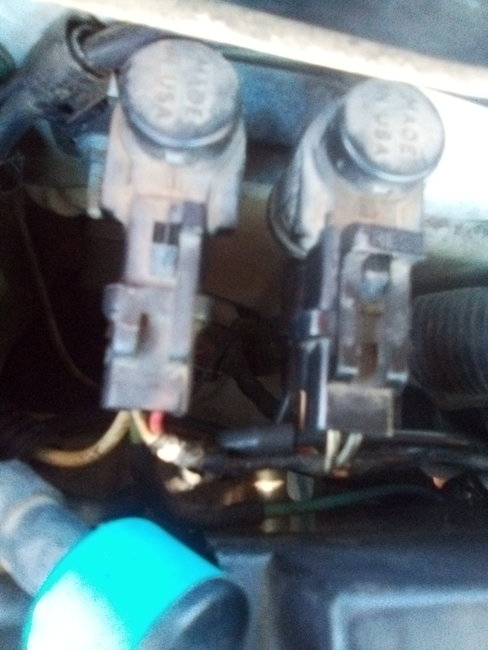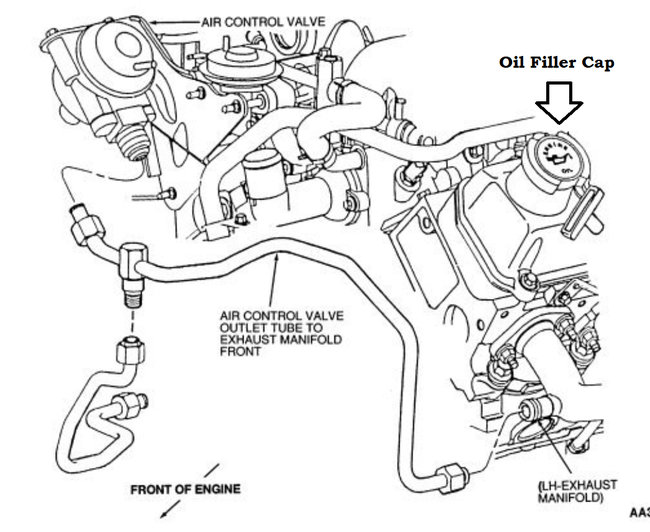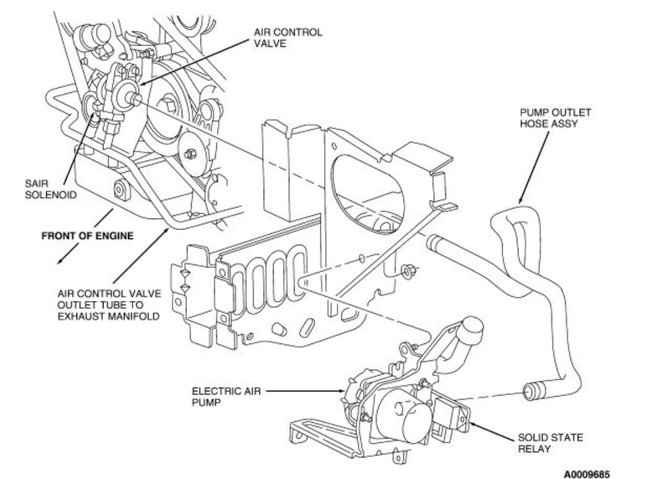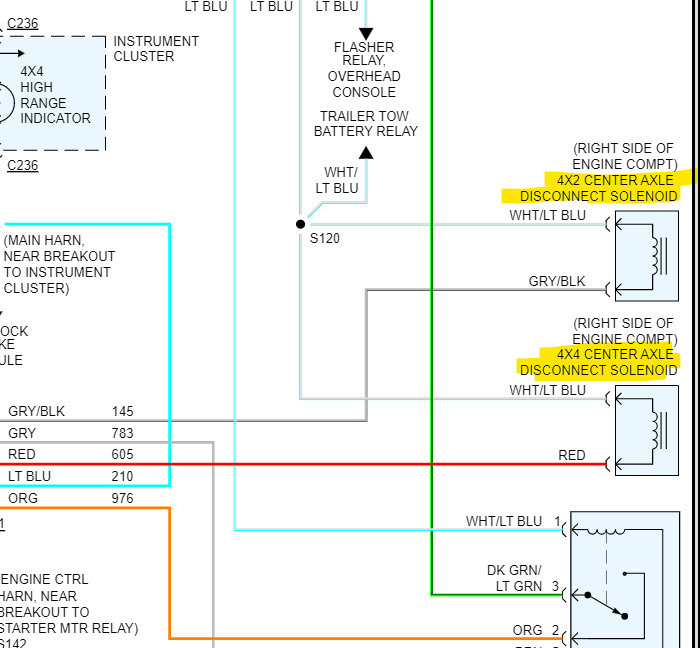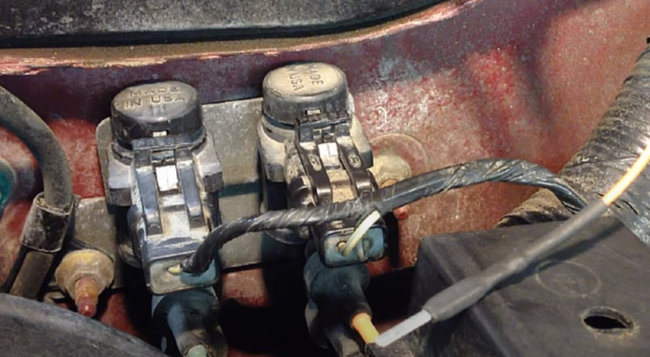I can see the vacuum lines attached to the bottom of one of them, can you follow where the lines go for each. I'll try to find a wiring diagram to match up the colors and see if I can identify them by that. They are definitely Solenoids to divert vacuum to different places. Do the wires on the one on the right have Stripes on the wires, a solid color with a stripe in the middle? Looks like Grey/Black maybe?
Do you notice any steel lines running into the exhaust manifolds, they may be up near the cylinder head or farther down, a Secondary Air Injection system? Any set ups like these, below.
Okay, I know what they are, they're for the 4wd, are you able to put the truck in 4wd and if so, are you able to get it out of 4wd? I believe those are the 4x4 and 4x2wd Disconnect Solenoids. The wiring colors even match up. Some models use engine vacuum to disengage the 4-wheel drive. You can check and see if you have vacuum lines running down to the front wheels. If so, those are known for causing vacuum leaks down at the hubs where the 4-wheel drive would disengage.
Okay, that's what those are. They are for the 4wd hubs. Does that picture #4 look familiar? Here's a video explaining how they work. Under those caps there are little air filters because the vacuum is released through the top of those solenoids when needed. If you're hearing a hissing noise in that area I would inspect the plastic tube like hoses. They are cheap plastic and crack and break after a while. There should also be a vacuum reservoir somewhere down in that area, it looks like a round plastic balloon with a couple lines running to it. I think you're going to find a broken line somewhere near those solenoids, obviously you've already somewhat found the problem area, if you can hear it leaking. I know it's difficult sometimes with the engine running to find broken lines.
The second video below has to do with the vacuum-controlled heater controls, just so you can get an idea of how they work as well.
https://www.2carpros.com/articles/how-to-use-an-engine-vacuum-gauge
https://www.youtube.com/watch?v=AWXiArMiqBw
https://www.youtube.com/watch?v=vCZ9NgV2ONk
Images (Click to make bigger)
Sunday, July 3rd, 2022 AT 1:26 PM
